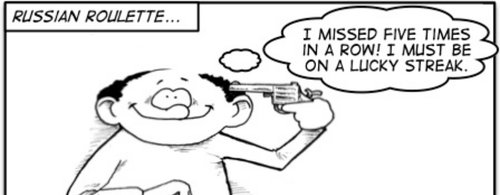antelopedundee
Well-known member
For the high demand areas the odds seem to just continue to go down for the most part.
There are some lower demand units in some states that really bounce around though. You really need to look at several years worth of odds to get a feel for it especially in units where there are just a few tags. In a state like New Mexico there are some units that bounce around up to even 100% draw odds some years then drop down to under 20%. Part of this is people "chasing" the odds. They look at the draw results and see that a unit had 80% or even 100% draw odds so they think it is a sure thing so they apply for it on their 3rd choice. The problem is there were only 2 or 3 nonresident tags and 20 or 30 other people noticed the same exact thing so they applied for that unit as well. What was 80% or 100% last year all the sudden drops to 10% or 20% this year. The next year people look at it and say that it wasn't really even a good unit to start with and with 10% or 20% draw odds there are a lot of other better units to apply for so all those people who only applied for it this year because of the high draw odds don't apply and suddenly the draw odds jump back up to 60% or 70%. You can try to time it with folks jumping in and out of those type units or just be aware and stay away from the years that it spikes due to the high draw odds from the previous year.
One technique that I use and I know some others do as well is looking at what the resident draw odds for the same unit I am applying for as a nonresident. There are generally more tags available to residents and with the larger sample size you get a lot less bounce in individual years drawing odds. Sometimes you can find some hidden gems where the resident odds are even lower than the nonresident odds. That's pretty unusual though. What you can see a lot more often are the units where residents are getting really good odds and nonresidents are getting really bad odds. That tends to tell me that the unit is overrated as the residents generally know what the good units in their state are as much as the online hunting application guides do.
Generally most people have things pretty well figured out but you can see some "lucky" units like was mentioned in the Idaho OIL drawing thread going right now.
I would for sure recommend not just looking at what last years odds happened to be when picking what unit to apply for.
My 2 cents. Nathan
I would think the resident draw result would be useful also. In WY residents get 80% of the lope tags. In the area I hunt 29 there were 600 type 2 tags. Out of their 480, residents drew just 49 so 431 tags were rolled into the nonresident pool. Of course in that case access is difficult so residents likely have as much difficulty with access as nonresidents, plus most aren't willing to pay an access fee or pay much of one. The type 1s are a different story and as a nonresident I don't have much chance at one. Years ago I got lucky in area 106 getting tags 2 or 3 years in a row. Now, I likely have very little chance. Probably ok to go for a low percentage tag if plan B is a high percentage tag.





